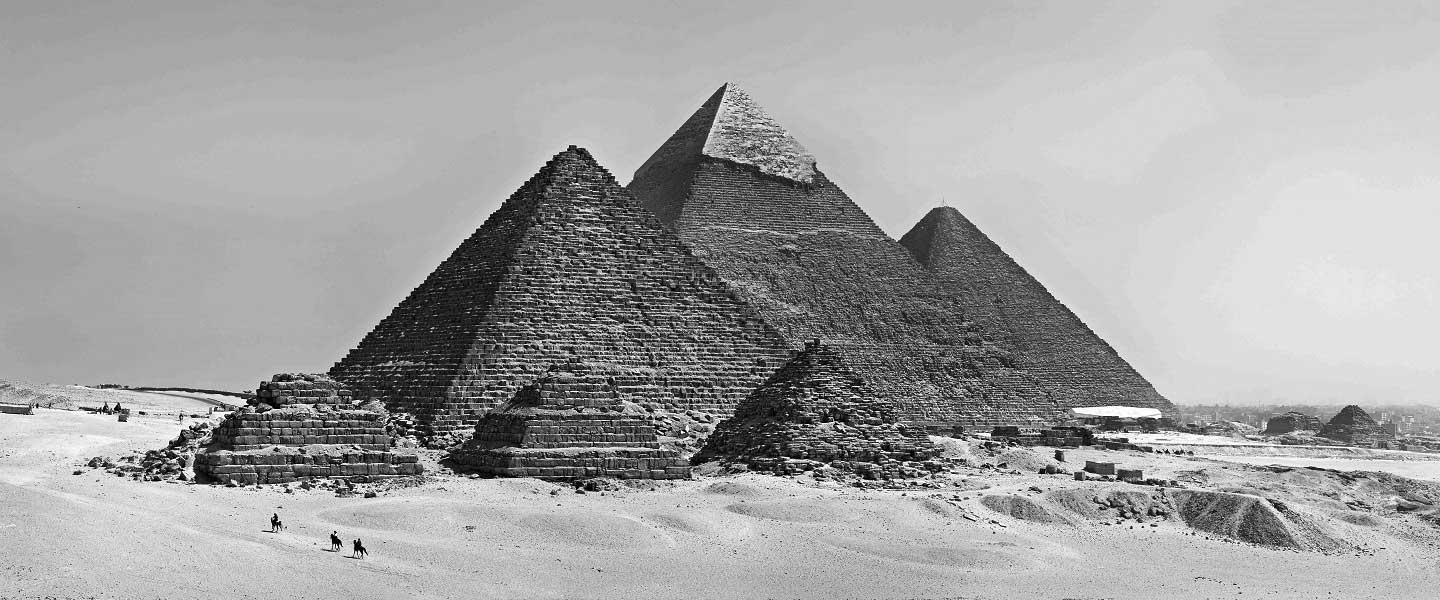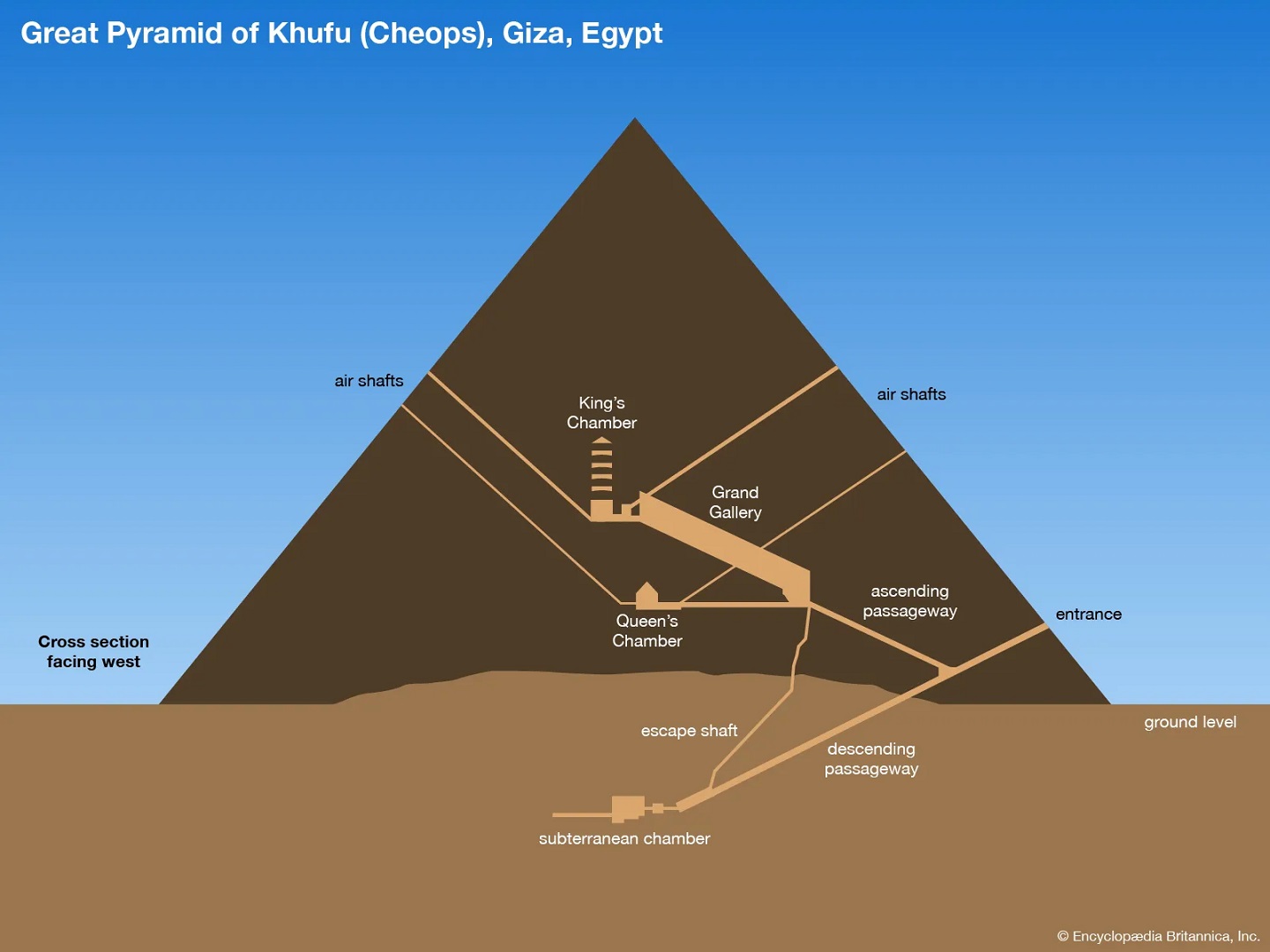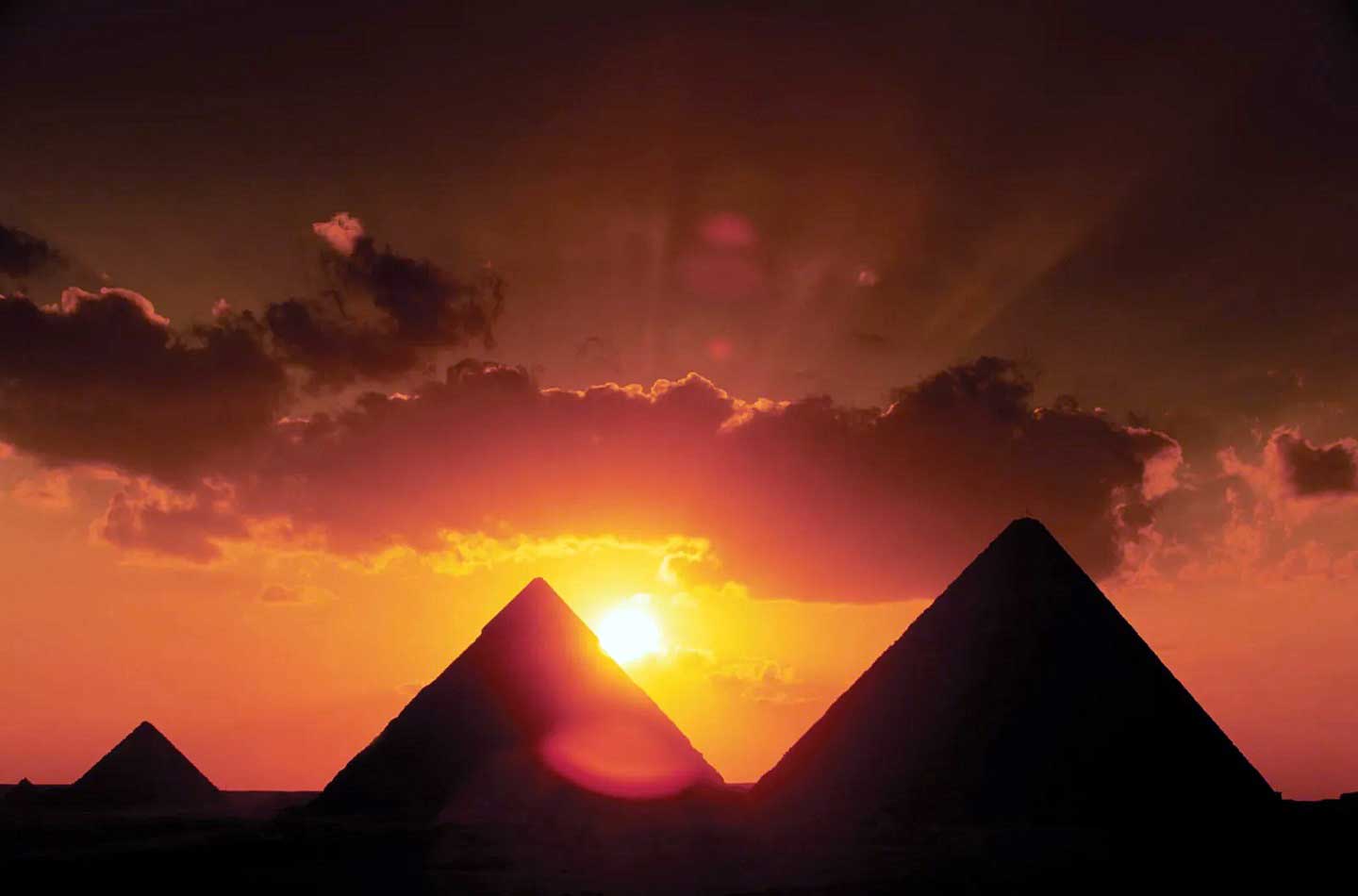Arabic: AHRAMAT AL-JIZAH, Giza also spelled GIZEH, three pyramids from the 4th dynasty (c. 2575-c. 2465 B.C.), erected on a rocky plateau on the west bank of the Nile River at Al-Jizah (Giza), northern Egypt; in antiquity they were counted among the Seven Wonders of the World.
The ancient ruins of the Memphis area, including the pyramids of Giza, Saqqarah, Dahshur, Abu Ruwaysh and Abu Sir, were declared world heritage sites in 1979.

Khufu, Khafre and Menkaure - correspond to the kings for whom they were built. The northernmost and oldest pyramid of the group was built for Khufu (Greek: Cheops), the second king of the 4th dynasty. It is called the Great Pyramid and is the largest of the three; the length of each side at the base averages 230 meters (755 feet) and its original height is. The middle pyramid was built for Chefren (Greek: Chefren), the fourth of the eight pyramids. kings of the 4th dynasty; The structure measures 216 meters (707 feet) on each side and was originally 143 meters high. The southernmost and last pyramid built was that of Menkaure (Greek: Mykerinus), the fifth king of the 4th Dynasty. Each side measured 109 meters and the completed structure was 66 meters high.
All three pyramids were plundered both inside and out in ancient times. For example, most of the grave goods originally deposited in the burial chambers are missing, and the pyramids no longer reach their original height because they have been almost completely stripped of their outer shell of smooth white limestone; the Great Pyramid, for example, is now only Khufu and is perhaps the most colossal building ever erected on Earth.
The sides are at an angle of 51º52' and are accurately oriented to the four cardinal directions. The core of the Great Pyramid is made of yellowish limestone blocks, the outer and inner passageways are of finer light-colored limestone and the inner burial chamber is built of huge granite blocks. About 2.3 million blocks of stone were cut, transported and assembled to make the 5,750,000-ton structure, a masterpiece of engineering skill and technical ability. The interior walls and the few remaining stones on the exterior show finer joints than any other masonry of ancient Egypt.

The entrance to the Great Pyramid is on the north side, about 18 meters above the ground. A sloping corridor descends from here through the masonry of the pyramid, penetrates the rocky ground on which the structure rests and ends in an unfinished underground chamber. From the descending corridor, an ascending corridor branches off, leading to a chamber known as the Queen's Chamber and to a large sloping gallery 46 meters long. At the upper end of this gallery, a long and narrow passageway gives access to the actual burial chamber, commonly called the King's Chamber. This chamber is completely lined and covered with granite. From the chamber, two narrow shafts run diagonally through the masonry to the outside of the pyramid; it is not known whether these were designed for a religious purpose or were for ventilation. Above the King's Chamber are five compartments separated by massive horizontal granite slabs. The purpose of these slabs was probably to shield the ceiling of the burial chamber by deflecting the enormous pressure exerted by the masses of masonry above.
According to the ancient Greek historian Herodotus, the construction of the Great Pyramid took 20 years. It was initially believed that 100,000 men worked on the pyramid, but probably only a fraction of this number was at work at any one time. This figure is based on an analysis of the area of barracks used by the permanent staff of about 4,000 men. Further study of tomb paintings indicates that 172 workers could move a 60-ton statue, so eight men could move an ordinary 2.5-ton block. A mortuary temple had been built near each pyramid, connected by an inclined road to a valley temple on the edge of the Nile floodplain. Nearby were also subsidiary pyramids used for the funerals of other members of the royal family.
South of the Great Pyramid near Khafre's valley temple is the Great Sphinx. Carved from limestone, the sphinx has the facial features of a man but the body of a reclining lion. It is about 73 meters long and 20 meters high. Surrounding the three pyramids are vast fields of funerary structures with flat tops called mastabas. The mastabas, arranged in a grid pattern, were used for the burials of family members or officials of the kings. In addition to the mastabas from the 4th Dynasty, numerous mastabas have been found from the 5th and 6th Dynasties (c. 2465-c. 2150 B.C.) and from the 3rd Dynasty (c. 2650-c. 2575 B.C.).
Reference(s) ..
www.khanacademy.org
www.britannica.com
www.engineering.com
